PERUVIAN BLUE/YELLOW HUFFER
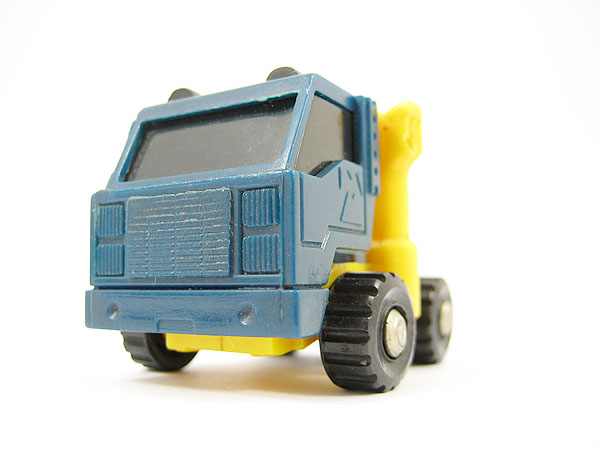
The Transformers minibot universe has been expanding for as long as I can remember, with discoveries being made in Europe, Mexico, Argentina, Brazil, Venezuela and Peru without any sign of abating. In addition to all of the bizarre colour variant appearances that have seemingly gone from being landmark events to becoming a part of the collecting furniture in the last few years, even carded examples of horribly rare minibots from Brazil, Mexico and Peru have started to surface. This situation would have been unthinkable back in 2003/2004 when I first started writing about minibots. Despite all of that, the acquisition of a Peruvian Lynsa-released minibot and the opportunity to review it still constitutes a significant event. So here is the blue and yellow Transformers Huffer, as released in Peru by Lynsa in the mid-to-late 1980s.
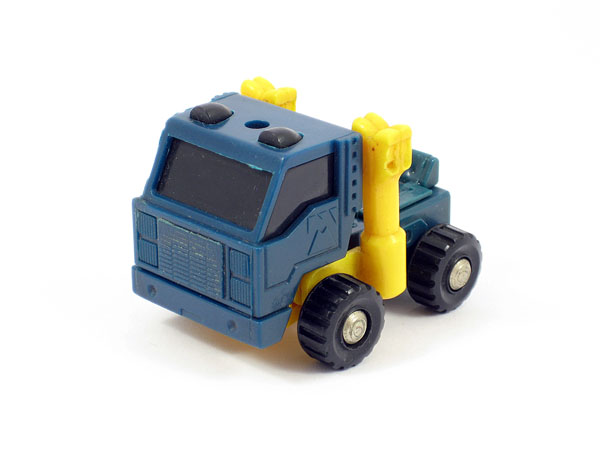
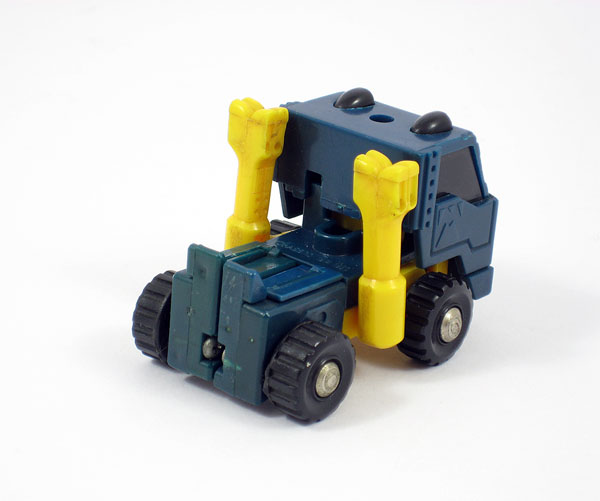
Between my first article on Peruvian minibots and the present day, I must admit that more of these little diamonds have appeared than I would ever have thought possible, and that's a tribute to the resourceful nature of minibot collectors together with the expansion and inevitable globalisation of the hobby and the community. While the Bumblebee and Cliffjumper variants from Peru seem to create the most furore, and the standard colour versions of the minibot moulds are understandably only really treasured by the hardcore, few could argue against the opinion that that the Lynsa Huffer has been graced with some of the best colour schemes in the entire range.
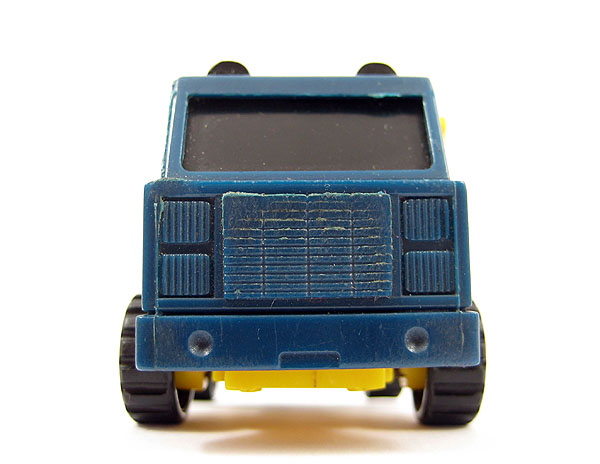
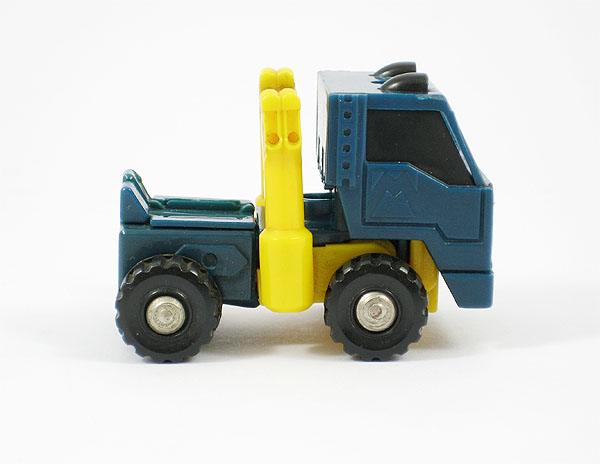
In fact one could even go so far as to say that Huffer variants in any country have the best colour schemes and variants, but for the time being let's make a case for the Lynsa Huffer. The fact that he was released at all in Peru is a big deal because minibot manufacturers Antex in Argentina and Estrela and Brazil neglected to use this mould for their Robocar and Optimus vs Malignus lines. Iga in Mexico, Ceji in Europe, El Greco in Greece, Rubiplas in Venezuela and Lynsa, though, more than made up for those notable gaps in Huffer's global domination. Huffer was of course first released in Japan by Takara as part of the Micro Change Series arm of the New Microman line in 1983. That toy then made it into the Transformers legend as Autobot "Huffer" in 1984 - re-tooled into "Pipes" in 1986. Mexico and certain sections of Europe also received "Pipes", but not as the re-moulded toy, instead as a simple repaint of the original Huffer mould, leading to the well-loved "Puffer" variant. Going back to the pre-Transformers part of his history, this mould was released in Europe in 1984 as "Truck" in the Ceji Joustra Diaclone line - although it was just a pre-rub Transformers Huffer sealed to a Joustra Diaclone card, Autobot logo and all.
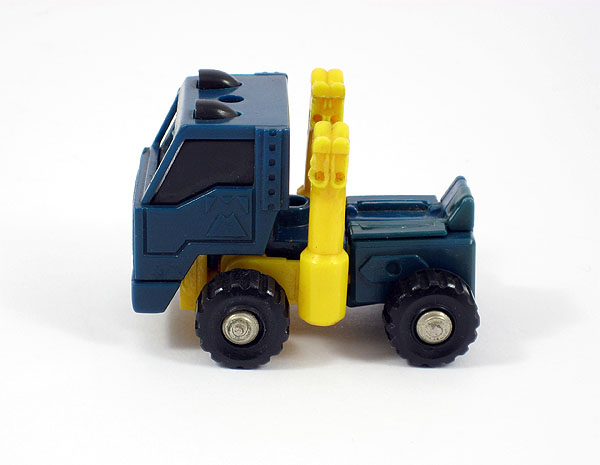
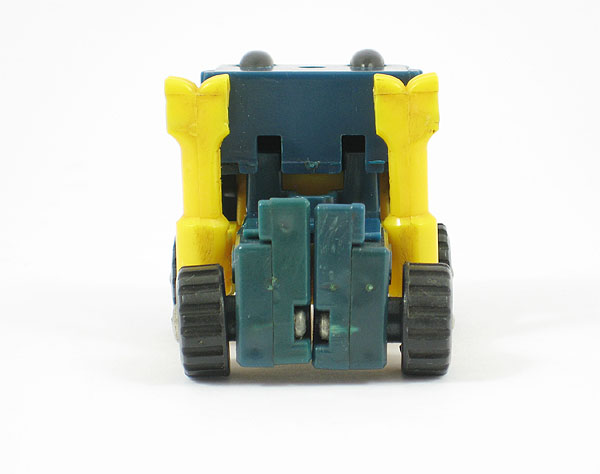
The Peruvian Huffer by Lynsa is a little different to most of the aforementioned releases in that he doesn't come with any chrome at all on the arms/smokestacks, they are instead moulded in exposed yellow plastic. You can see that the mould retains its "M" detailing on the sides of the cab, making reference to the mould's Microman heritage. As well as this blue/yellow scheme, he was also available in peach/yellow and even red/yellow.
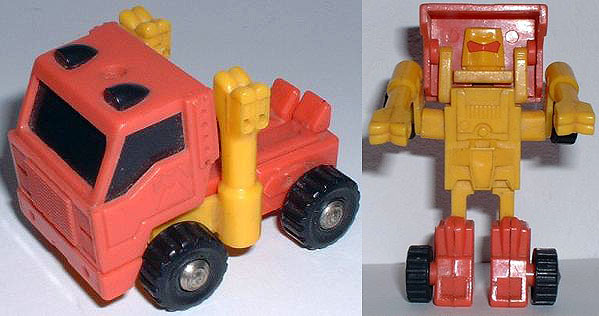
Quite astonishingly, in the last few months it appears a case find of Lynsa minibots was made in Peru, mostly of the Huffer. While this does not equate to a sudden flood of hundreds of items on the market, it did mean that a select group of lucky collectors (and now slightly richer Peruvians) were able to add carded - yes carded - Lynsa Huffers to their collections. Most of those that appeared were the red/yellow Lynsa Huffer, but a few blue/yellow ones were found and sold as well. Here's a red/yellow one that I was lucky to see in the flesh:
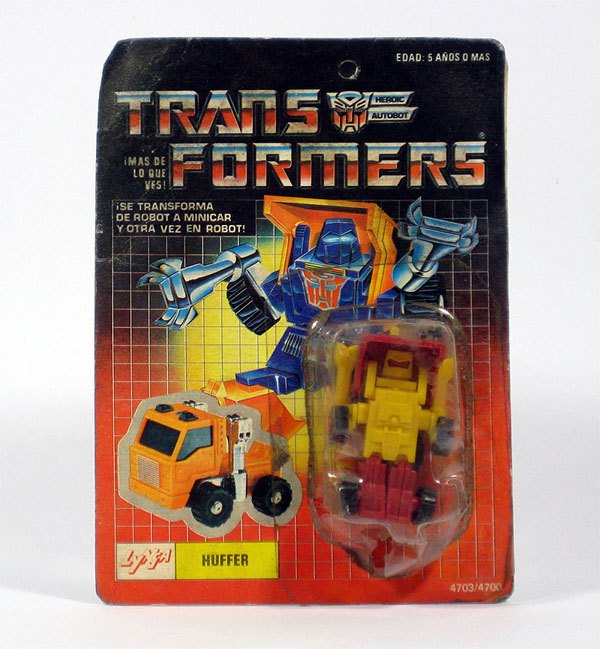
A genuine MOSC Peruvian 'Lynsaformer'. The card has Spanish text not unlike the Iga packaging for minibots from Mexico. The blue/yellow Huffer would have come packaged on precisely the same card. You can see this is from a case find as the card is unpunched (circular cutout at the top). The Lynsa logo is in the bottom left hand corner and the general appearance of the packaging proves these were licensed items.
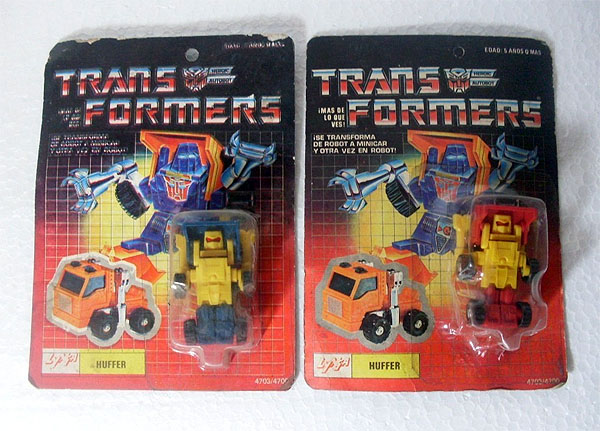
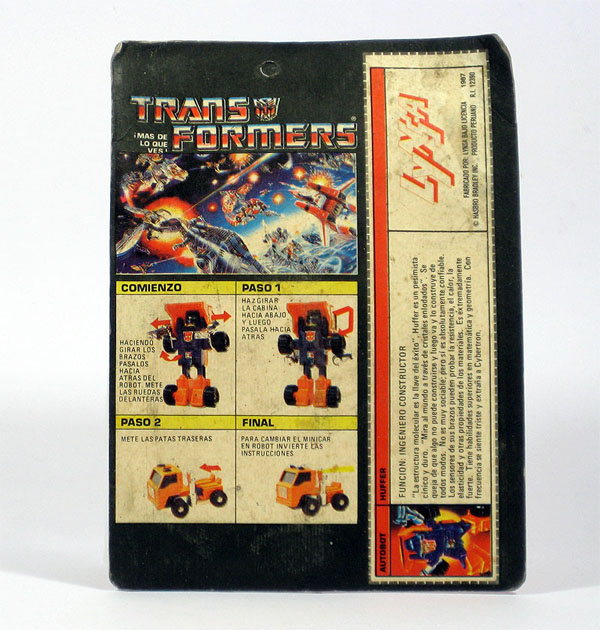
The card back features 1985 artwork, Huffer's traditional instructions and an understandable lack of robot point or "clip n save" text. The text under the "LYNSA" logo on the techspec shows a very clear Hasbro Bradley copyright and is dated 1987. The general card and bubble quality are noticeably lower than that used on Hasbro's Transformers packaging. This particular specimen must have been stored under other things as the card is bent and the bubble shows significant damage; cracks, dents and depressions all over it.
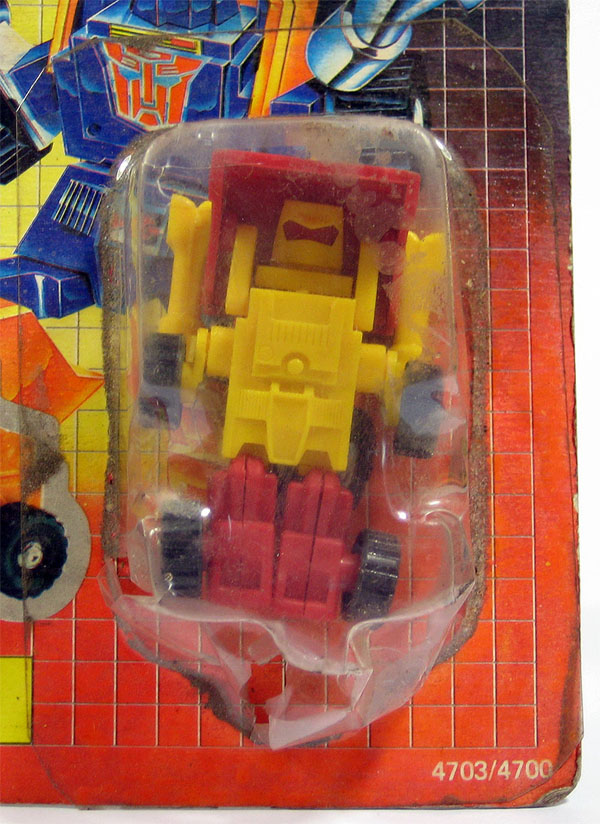
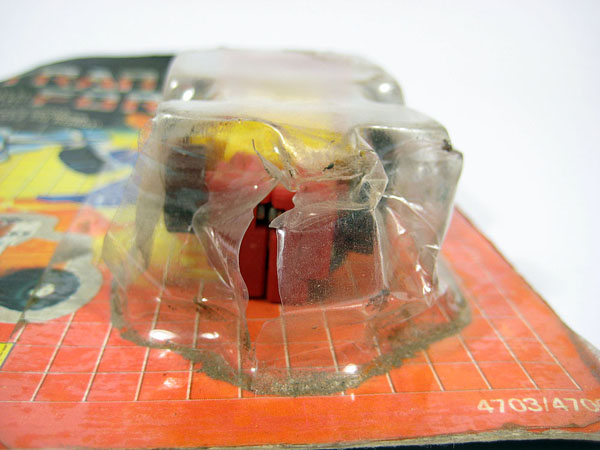
The assortment number is clear in the above photographs, and despite the heavy damage to the bubble, this is a really magical item from a part of the world that could easily have kept its packaged Transformers history a secret forever. The red and yellow Lynsa Huffer is a true beauty as well, plus how very interesting to see that even factory sealed there are no stickers to speak of, Autobot or otherwise.
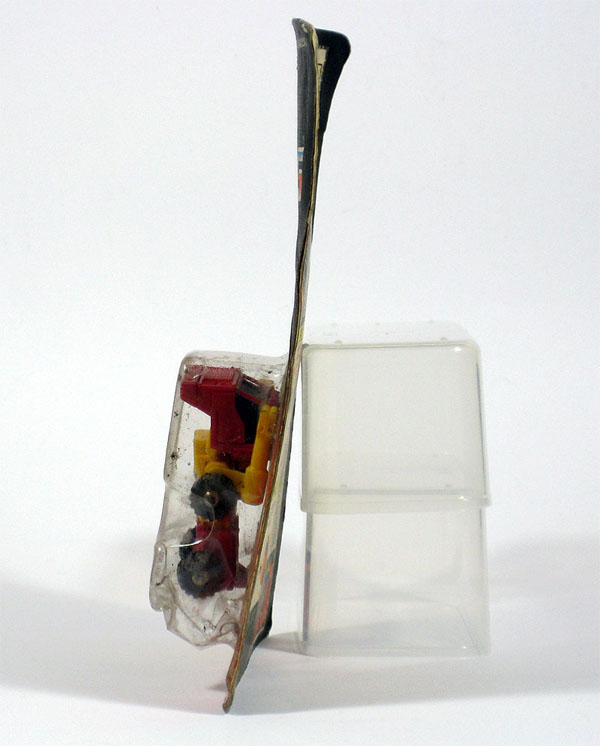
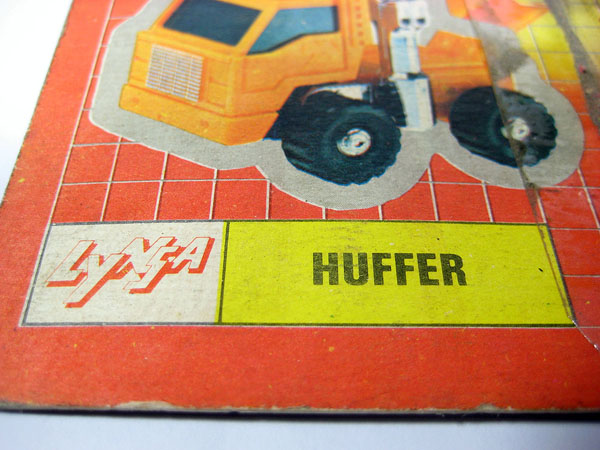
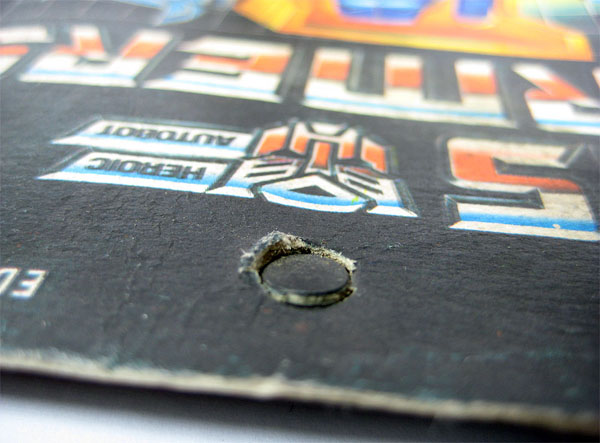
Case finds aside, the blue/yellow Huffer which is the focus of this article does not come from such a fantastic discovery, it is just a regular - but equally unforgettable - 'find'. Aside from a little discolouration on one of the feet, to find a loose Lynsa minibot in unbroken, fully functional and displayable condition is really quite rare.
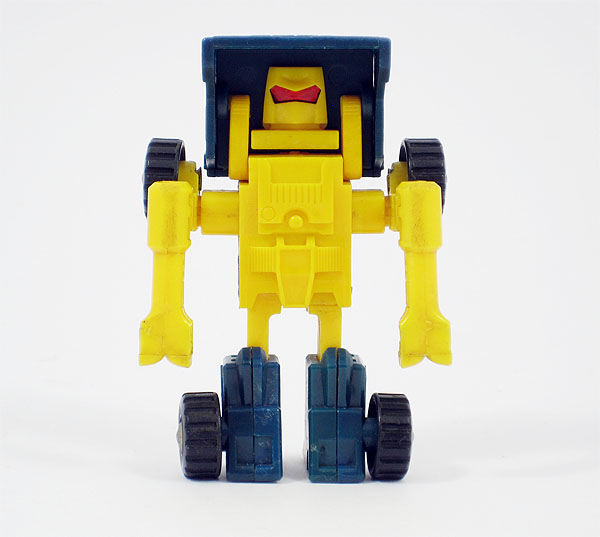
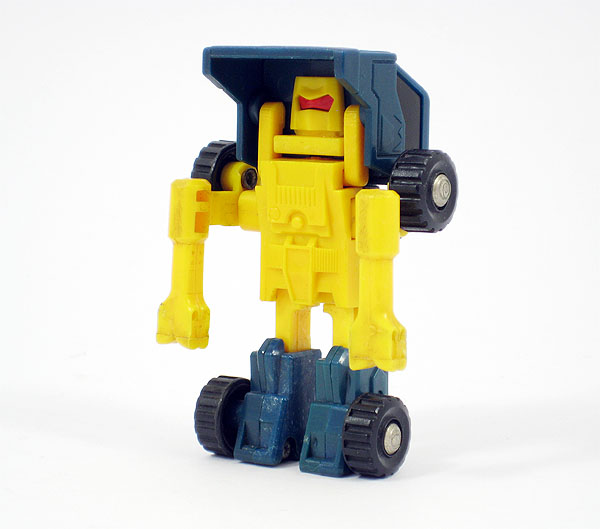
The lack of chrome on the arms, meaning that the torso, thighs and arms appear as one unending yellow expanse, can be quite bizarre. The red eyes are a fantastic feature of these Lynsa (and a few other) variant Huffers. The blue used is also not a straightforward Pipes blue or Huffer blue, it has a tinge of green to it not unlike the later 'Mekki' Diaclone Powered Convoy and Diaclone Thundercrackers, obviously without the sparkly flakes.
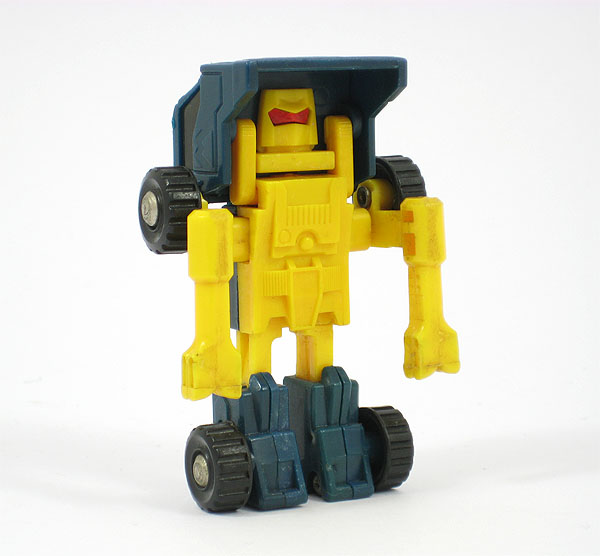
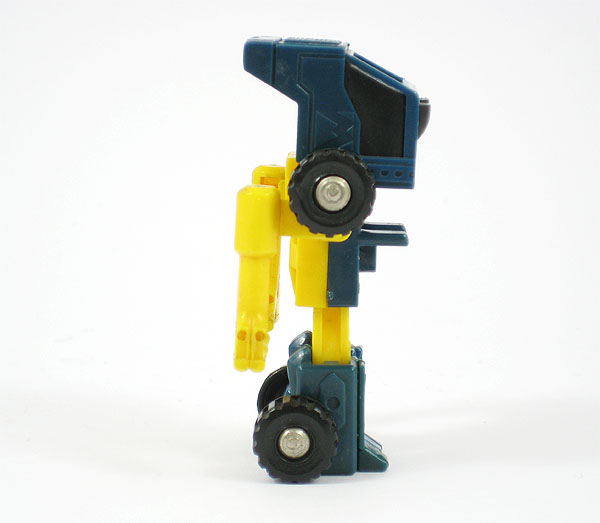
There is definitely a very plain look to the figure due to the lack of any stickers or Autobot insignia, and together with the lack of chrome and slightly lower quality build than a Hasbro or Takara product, it's not hard to understand why some would question the licensed nature of the Lynsa Huffer, but it is licensed. During transformation, you don't want to be yanking on the lower legs to make sure they click, and you certainly don't want to be too vigorous when moving, locking or unlocking the cab section.
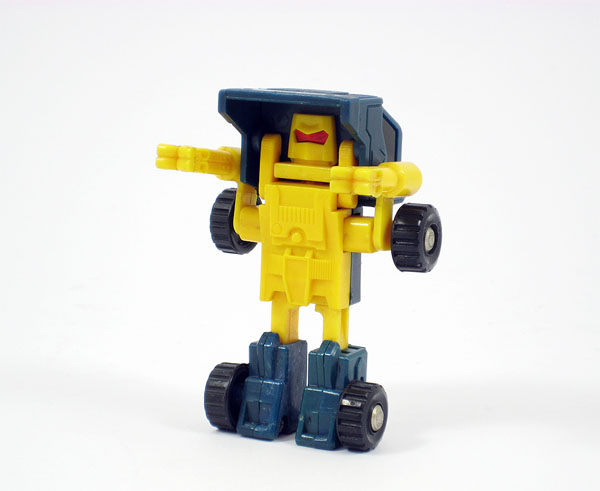

Nobody collects minibots for poseability, but even the simple act of raising Huffer's arms can make him look that much more humanoid and less ill-proportioned as when his arms are facing directly downwards.
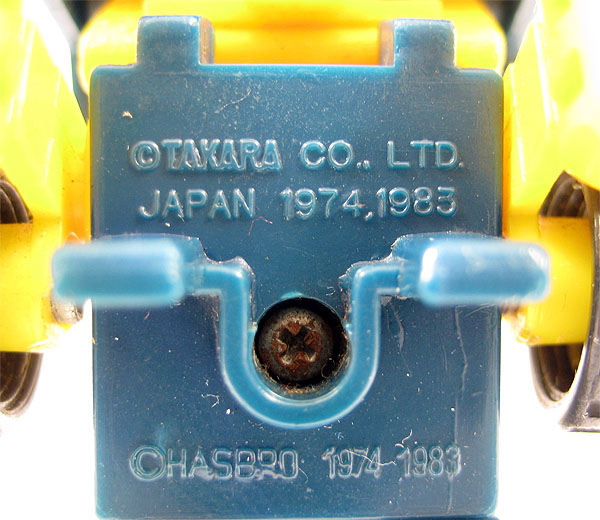
Lynsa Huffer's copyright is an interesting one as it contains both Takara and Hasbro markings, and a rather misleading "Japan" stamp, the toy was clearly not manufactured there to the same quality standards or using the same materials as the Takara or Hasbro Transformers. The Has/Tak markings on Lynsa minibots are yet another factor that set them apart from the Antex and Estrela minibots from South America. Interestingly, Rubiplas minibots from Venezuela are also Has/Tak stamped - this shouldn't really surprise us as the Iga, Rubiplas and Lynsa cards are truly similar to Transformers cards from the US, it's only the Estrela and Antex cards that are markedly different and therefore the toys are not Has/Tak stamped. Their licensing agreement with Hasbro and Takara was clearly different in nature to that of Lynsa, Rubiplas and Iga. Just on the subject of Huffer copyrights, it's fascinating and confusing to note that the Ceji "Puffer" and the El Greco Greek Huffer moulds have no copyright stamp whatsoever - yet they were licensed products sold on proper "Transformers" cards too.
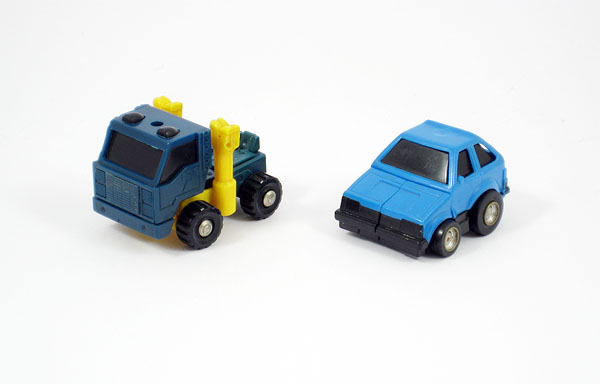
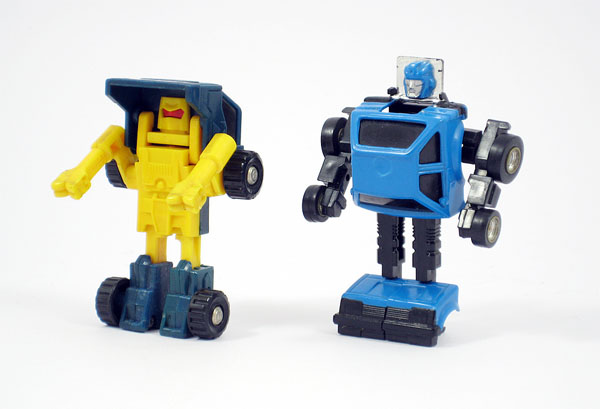
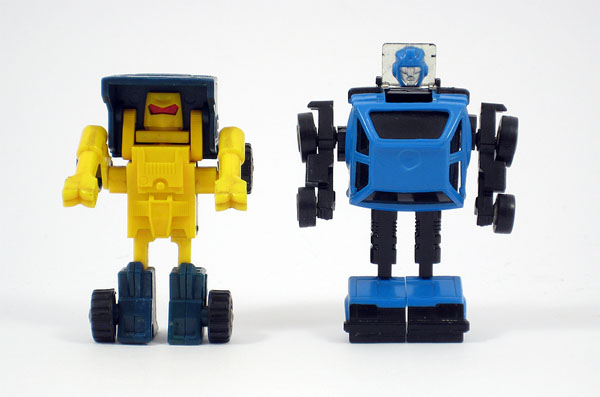
No amount of passed time nor the increase in minibot variant collectors can dim that eerie feeling one gets when presented with the alien beauty of these unfamiliar little robots. A lifetime's worth of programming has led us to accept Huffer as normal only when orange and blue. When these figures are placed next to each other, each with their own distinct history from an unconventional birth or toy line, it is always something special to behold.
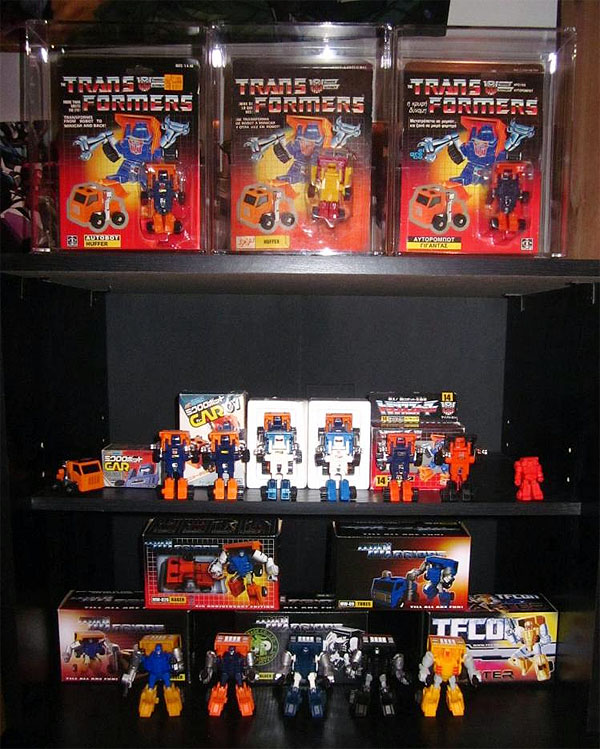
Just the fact that minibot variants exist - and in such varied and increasingly discovered numbers - allows enthusiasts to build entire displays or collections around a single tiny figure that was never intended to be the centrepiece of anyone's Transformers army. The collection above is undoubtedly the most well-known and beautiful dedicated to the Huffer character, and it's no surprise that of the ones displayed above - however fast that collection was built (and it was fast!) - the Lynsa Huffers (both the one in this article and the carded red/yellow in the picture) were the last unique variants to be added to it.
A case find may have increased the number of Lynsa Huffers in the community, but just like the Marlboor Wheeljack find of 2002, if you missed that initial opportunity to bag one then you'll probably curse yourself for it even years from now. A rare toy is a rare toy, and a handful of dusty unsold spcimens found under a pile of junk cannot change that fact in the long run.
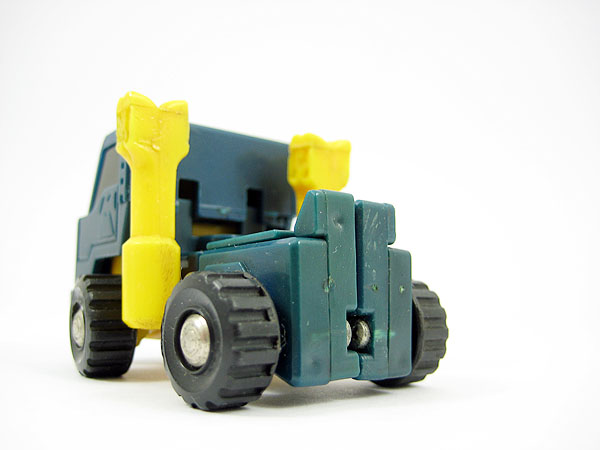
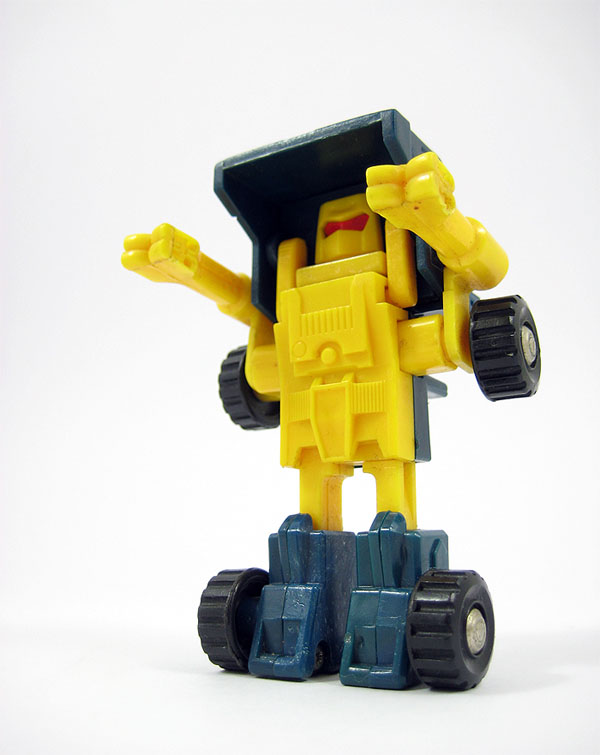
Many kind thanks to Justin Shannon for the sublime Huffer collection and MOSC blue Lynsa Huffer picture, and to Jose Antonio Suarez Rojas for the peach/yellow Lynsa Huffer image.
All the best
Maz@tf-1.com